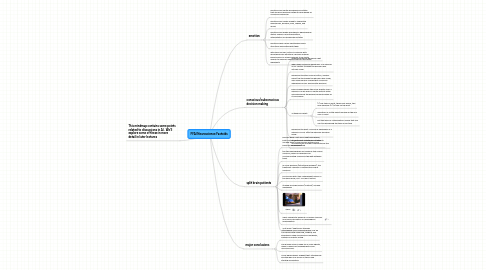FFAI Neuroscience Factoids
by Thomas Breuel


1. This mindmap contains some points related to discussions in AI. We'll explore some of these in more detail in later lectures
2. major conclusions
2.1. "Intelligence" and "consciousness" may be concerned with observing, judging, and preparing a large unconscious machinery, instead of directly acting.
2.2. The human mind is made up of many agents, many of which act independently and unconsciously.
2.3. Some philosophers suggest that "intelligence" and the idea of a "mind" is itself a bad starting assumption.
3. split brain patients
3.1. humans have a left and a right hemisphere, both containing almost everything you need to live and think (some humans actually only have one hemisphere)
3.2. the two hemispheres are linked by the corpus callosum, which is necessary for communicating conscious thought between them
3.3. in some diseases (intractable epillepsy), the treatment consists of cutting the corpus callosum
3.4. you end up with "two independent minds" in the same body, but... you don't notice
3.5. studied by Roger Sperry (Caltech), Michael Gazzaniga
3.6. video
3.7. video congenital absence of corpus callosum and more information on hemispheric specialization
3.8. "left brain / right brain" theories
4. conscious/subconscious decision making
4.1. original studies by Benjamin Libet
4.2. when does conscious awareness of a decision occur relative to when the decision was actually made
4.3. experimental setup: push a button, verbally report the time when the decision was made, also measure EEG; shows that conscious awareness occurs 300ms after decision
4.4. brain imaging shows this more directly now: a decision can be seen in mental activity often seconds before the person becomes aware of it consciously
4.5. "cutaneous rabbit"
4.5.1. (1) five taps on wrist, three near elbow, two near shoulder (2) 10 taps on the wrist
4.5.2. sensation of a little rabbit running up the arm only in case 1
4.5.3. but that kind of "interpolation" means that you can't be perceiving the taps in real time
